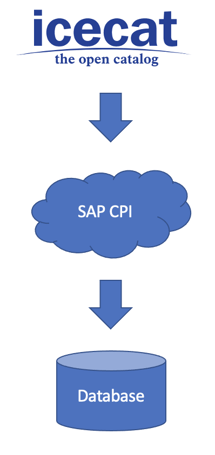Icecat is an open catalog for product information management. It includes millions of product information items in multiple languages that are published and distributed worldwide. Using the information provided by Icecat, companies can quickly and easily enrich their material master data in SAP Master Data Governance (MDG).
Would you like to learn more about SAP MDG?
Icecat connectivity: What you need
To connect Icecat to SAP MDG, an Icecat membership is required to get access to all available product information. In this case, Icecat provides an API key that can be used to read a product’s information. Without Icecat membership, reading out product information is only possible to a limited extent or, in the worst case, not at all.
In addition, a classification is required in order to be able to clearly assign the material. Such a classification can be the ECLASS catalog, for example. In addition to the classification, a mapping between the classes and the Icecat characteristics is also required. Both the classification and the mapping can be replicated.
Index file and daily file
The goal of the Icecat connection is to enrich materials and automatically add them into SAP MDG. For this purpose, Icecat provides two documents: an index file and a daily file. The index file contains a complete listing of all products that Icecat has included in the system. This can be retrieved once a month free of charge. The daily file contains the changes of the day and is available daily for free retrieval.
However, both files do not contain the complete information of a product, but only various internal IDs, entry data, country keys and other reference data. Users can use the IDs to request detailed information about a product. To avoid a permanent query of these index/daily files from the web, this information can alternatively be downloaded into customizing tables and permanently updated. The initial loading of these files is done via a report or via an iFlow in SAP CPI.

Search based on various parameters
Once the catalog has been loaded into the system’s tables, a product search can be performed in the Icecat catalog. For the query, Icecat offers three options: the manufacturer number and brand, the Global Trade Item Number (GTIN) or the Icecat ID. In our scenario, we perform a search using the Icecat ID. For this, we search the customizing table of the Icecat catalog for the item code of the corresponding product. If there is an existing entry, the corresponding Icecat ID is requested via an HTTP request with the API key to Icecat.

Automated change request
After a positive response, Icecat provides more detailed information about the product. From this point, a change request is created in SAP MDG for the material. Using mapping, the Icecat data is written to the classification of the material and the change request is finalized.

Added value through more information
The connection of Icecat to SAP MDG offers a good opportunity to complete the material master data, to enrich it with additional information and in this way to noticeably increase the data quality. In particular, companies that operate a web store, provide a virtual marketplace or pursue other platform-based business models can use the data stored in the Icecat catalog to their advantage and thus offer their customers real added value.
![IBacademy_Logo_blau[496] IBacademy_Logo_blau[496]](https://www.ibsolution.com/hs-fs/hubfs/IBacademy_Logo_blau%5B496%5D.jpg?width=200&name=IBacademy_Logo_blau%5B496%5D.jpg)




